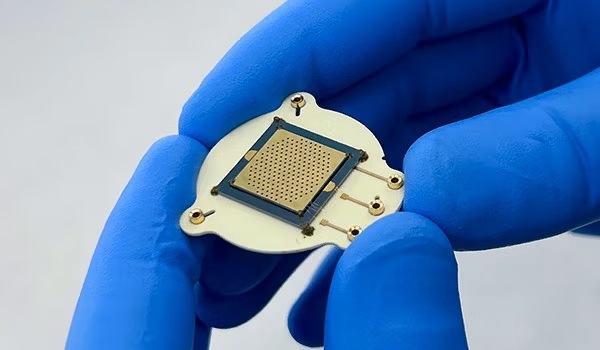First-Of-Its-Kind Handheld Device Accurately Detects Fentanyl in Urine within Seconds
Posted on 09 Feb 2024
Fentanyl, a synthetic opioid recognized by the Centers for Disease Control and Prevention as being 50 times more potent than heroin and 100 times more potent than morphine, is often illicitly combined with other drugs. Just 2 milligrams of fentanyl, roughly equivalent to 10 to 15 grains of table salt, can be fatal. Daily, over 150 people succumb to overdoses involving synthetic opioids such as fentanyl. Research has shown that fentanyl can be detected in urine up to 72 hours after use. Now, researchers have developed a first-of-its-kind, handheld device that is capable of accurately detecting fentanyl in urine within seconds.
The device developed by researchers at University of Texas at Dallas (Richardson, TX, USA) contains an electrochemical sensor that operates by generating electrical signals from chemical reactions. Detecting fentanyl was challenging due to its nonvolatile nature, meaning it doesn't naturally produce an electrochemical signature. To overcome this, the researchers designed a molecular cage-like structure resembling a mousetrap to capture fentanyl. This "trap" incorporates several components, including gold nanoparticles, and utilizes naloxone, a medication that reverses opioid overdoses, to attract and bind to fentanyl. When a urine sample is applied to a test strip, the presence of fentanyl triggers a reaction with the naloxone, resulting in a detectable signal.
_2.jpg)
This technology can also test other substances for fentanyl by simply diluting a sample in water and applying it to the sensor. The team's proof-of-concept device can detect trace amounts of fentanyl with 98% accuracy, bypassing the need for expensive and time-consuming lab analyses. The current prototype, designed for urine testing, is a precursor to developing a saliva-based test. Efforts are underway to expand the technology for detecting fentanyl in hair, with the ultimate goal being a saliva test. A saliva-based test would be particularly beneficial for first responders in making timely treatment decisions for overdose cases.
“There is an urgent demand for an easy-to-use, portable, miniaturized device that can detect fentanyl with high specificity and share results immediately to an internet-connected device,” said Dr. Shalini Prasad, professor and department head of bioengineering in the Erik Jonsson School of Engineering and Computer Science. “Our study demonstrates the feasibility of a highly accurate sensor to detect fentanyl within seconds.”
Related Links:
University of Texas at Dallas













